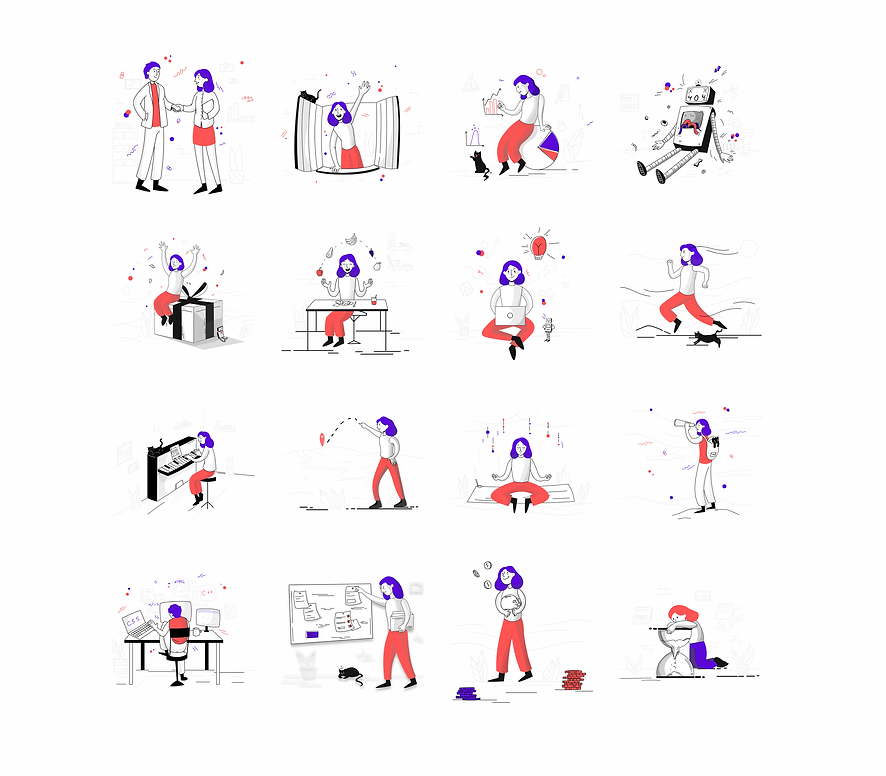top of page

Overview
Background Information
While attending school in the United States, both in the private and public sectors, I experienced a lack of Career guidance. Because of this personal experience led me to look at Scholarly research journals to see if my experience was a one-off, or if students were experiencing the same issues as I have. These are some of the information I found during the research:
1. A study taken in the US shows that 77.2% of the respondents who are students always seek guidance and counseling when it is readily available.
2. The median student-to-counselor ratio is 411:1 albeit having a recommended ratio of students to counselors being 250:1.
3. There is a lack of guidance in career planning because of limitations around the availability of guidance counseling and personalized services.
4. Counseling programs instill positive behaviors in an early stage of a student’s life where the discovery of their talents, abilities, potentialities, strengths, and weaknesses, however, is not reaching all students.
5. Districts with higher rates of traditionally disadvantaged races reported a 642:1 ratio of students to a counselor. The shortage is due to funding & not having an alternative method of a system to moderate support.
Problem
How might we ease the burden of time constraints and engagement limitations for guidance counselors while engaging students to use aggregated research to find information in one place so they do not feel a lack of career guidance?
Solutions
The best way to have opportunities is to have mentorship that can give guidance to a financially rewarding career.
By automating certain aspects of academic focus, a counselor can deploy his or her services to support career and social-emotional development.
The automated services can range from instruction, appraisal, and advisement, to professional assistance during times of transition by aggregating information in one place about career paths and processes, so a student can find information without feeling judged and a counselor can free up time to provide a more personalized service based on the students desire.
Design Process

The Research
A Scientific Journal research was done to find factual information to assess the validity of the problem statement:
1. An educational institution burdened with numerous students looking for one-on-one service
2. Unable to provide much-needed services due to budgetary limitations, or/and career counselor shortages
3. Although most schools have a school counselor present, the median student-to-counselor ratio is 411:1
4. The shortage is due to funding & not having an alternative method of a system to moderate support

Interviews
An assessment questionnaire was taken from 25 participants, of which 5 were selected for interview based on availability and willingness to share thoughts. Of these 5 participants, three are shown below who had the most experience in dealing with counselors and had the least to most return on education and time investments



Affinity Map
During the interview it was discovered that all interviewees saw a need for the counselor’s attention and direction, however, due to restrictive time, a standard message was provided that left interviewees frustrated

Personas
Out of the several interviews, these two personas were created. Although these two users are fairly similar, the difference is that the Main User requires far more attention and direction than the Secondary User. The main user’s motivation is to find independence, while the other user needs a fulfilling career path


Branding

Moodboard
The mood board has images that resonate with the idea of inclusiveness without catering to a specific gender or creed

Illustration
The illustration caters to similar idea around non-segregation with images that could represent any race or background

Colors (Stage 1)
While light colors are easy on the eye, they seem to be missing the contrast and do not align with inclusiveness

Colors (Stage 2)
While changing the color to have better contrast, the app will use illustration to stay in line with inclusiveness. This way all demographic can be covered without misrepresentation. The illustration should be modern while communicating simplicity, and openness

Buttons
The app will use rounded buttons to allow users’ eyes to easily follow lines. This way it stays modern while communicating simplicity, optimism, and openness within an education-related app that advertises inclusiveness

















Conclusion
Goal
-
The app achieved its goal of providing students with simplified information
-
The app offers counselors a way to save time and offer personalized service
-
The app retains the feel of inclusiveness without any specific colors that could stand
-
The app is Gender neutral (without anything being super feminine or masculine)
-
The illustration is neutral to evoke acceptance
-
The edges are rounded off to keep the calmness intact
Pain Points
-
Although this design of the app appeared quite simple, it is extremely data and detail-heavy
-
The number of components needed to have a simplified design
-
The app could become complicated easily as more functions are added, however with users' constant input,
-
The app could only cater to students' goals & options by breaking them down into simple steps
Lessons Learned
-
Students and mentors must have a symbiotic relationship
-
To save time, AI and data need to utilize.
-
Resources and materials need to be aggregated in one place to give the student peace of mind
-
An application that caters to all students will require in-depth research
-
The involvement of career counselors needs to be considered to create a user-friendly application
bottom of page
